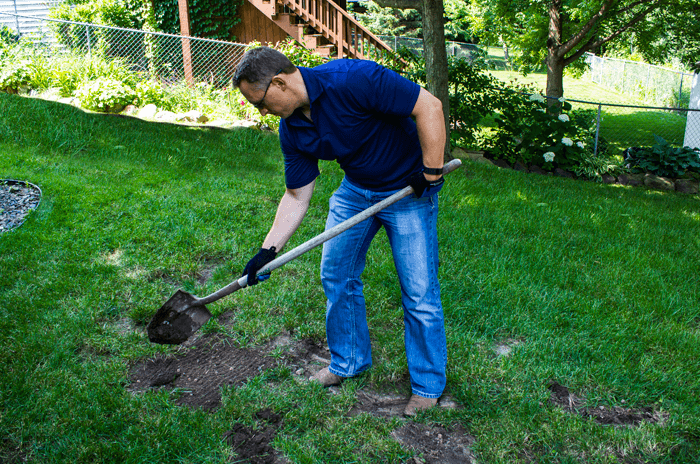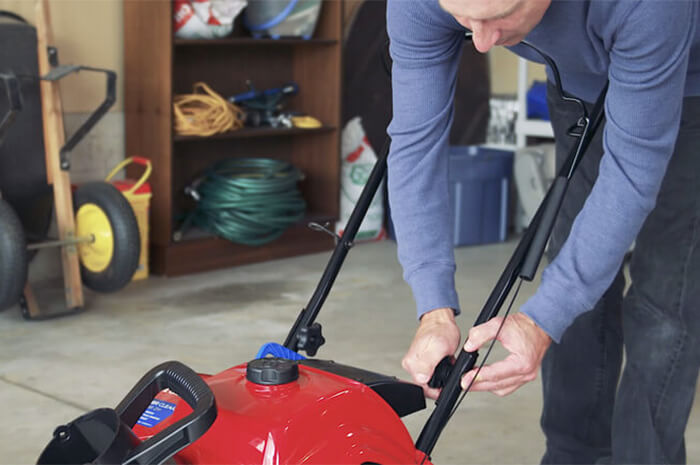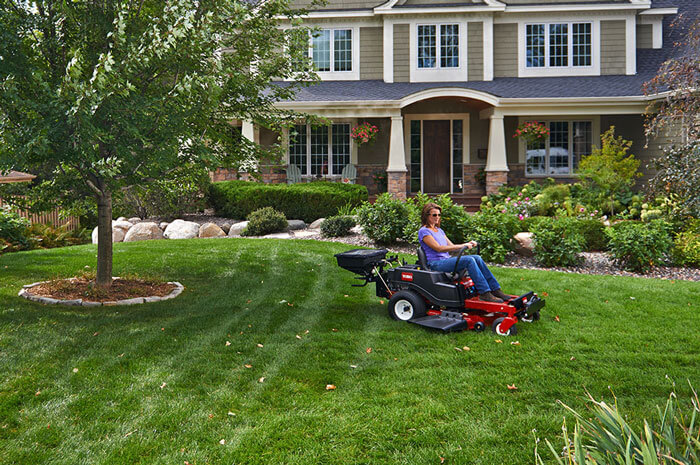
A green and healthy lawn starts, literally, from the ground up. One way to improve the look and health of your lawn is to improve the soil. While techniques such as aeration, changing mower height to adjust for how long you want your grass to be, spreading fertilizer, or reducing thatch can be great, sometimes a technique called topdressing is the best way to improve your lawn’s appearance.
What is Topdressing a Lawn?
Lawn topdressing is the process of adding soil or other organic material, such as compost or sand, directly over the top of your lawn in a thin layer that’s between a quarter-inch and half-inch deep. In addition to improving soil conditions, topdressing can help smooth out rough or uneven areas in your lawn. It also can set the stage for seeding bare areas.
Lawn topdressing is also a good technique for:
- Improving seed germination
- Making turf thicker and more resilient
- Increased microbial activity, improving overall lawn health
- Giving extra protection to exposed tree roots, protecting tree health while making it easier to mow
Tree roots require oxygen, which is why some types of trees tend to push their roots above the surface. If you are topdressing around trees with exposed roots, be sure to go very thin with your application. If you’re worried about your trees getting enough oxygen into their root system, mulch around those trees and exposed roots instead of topdressing. Mulching can limit tripping hazards and potential mowing damage without suffocating the roots.
When You Should Topdress a Lawn
“Turf professionals use topdressing techniques to improve high-maintenance, high-use areas, such as putting greens, all the time,” explains Van Cline, PhD., senior agronomist at The Toro Company. According to Cline, there are three benefits to topdressing your home lawn.
“The primary benefit of topdressing is to aid the breakdown of thatch,” he says. Adding soil to the surface of your grass allows it to work its way down into the turf, speeding up microbial activity. The soil particles help speed up the decomposition process. Topdressing also can help smooth out bumpy areas in your lawn, filling in low spaces or other damaged areas. Finally, topdressing can modify soil conditions, creating a better growing environment for the turf. Knowing your soil conditions before you choose what type of material to use for topdressing is key.
“If you have poor soil, you can modify the soil properties by topdressing,” explains Cline. “Adding a coarse material, such as sand, to heavy clay soils can improve drainage. Topdressing with compost on soil that is too sandy or lacking in nutrients can improve the growing conditions. If you have good soil, you should be topdressing with a mixture similar to your current soil conditions.”
How to Topdress
Adding too much soil or other organic matter at once can create poor growing conditions. So again, only spread a quarter- to half-inch of soil in a single application. And if your chief concern is exposed tree roots, adding mulch may be a better technique than lawn topdressing.
Spreading your soil or other organic matter will require a little manual labor. Distributing the soil mixture with a shovel is the most common application. “If you have very dry material, you can use a broadcast fertilizer spreader,” says Cline.
Once the process is completed, watering your lawn will help the soil settle into the ground. Be sure the soil mixture is completely settled before your next mowing. As your application takes effect, a key benefit of lawn topdressing is your lawn will become denser, which will minimize weed growth because you will have minimized the amount of space for weeds to take root.
More Resources From Toro
For more home lawn care and landscaping techniques to get the most from your outdoor spaces, check out our other resources. From lawn mower guides to how to aerate your lawn properly, make Toro YardCare your one-stop shop lawn care tips, guidance and inspiration.



